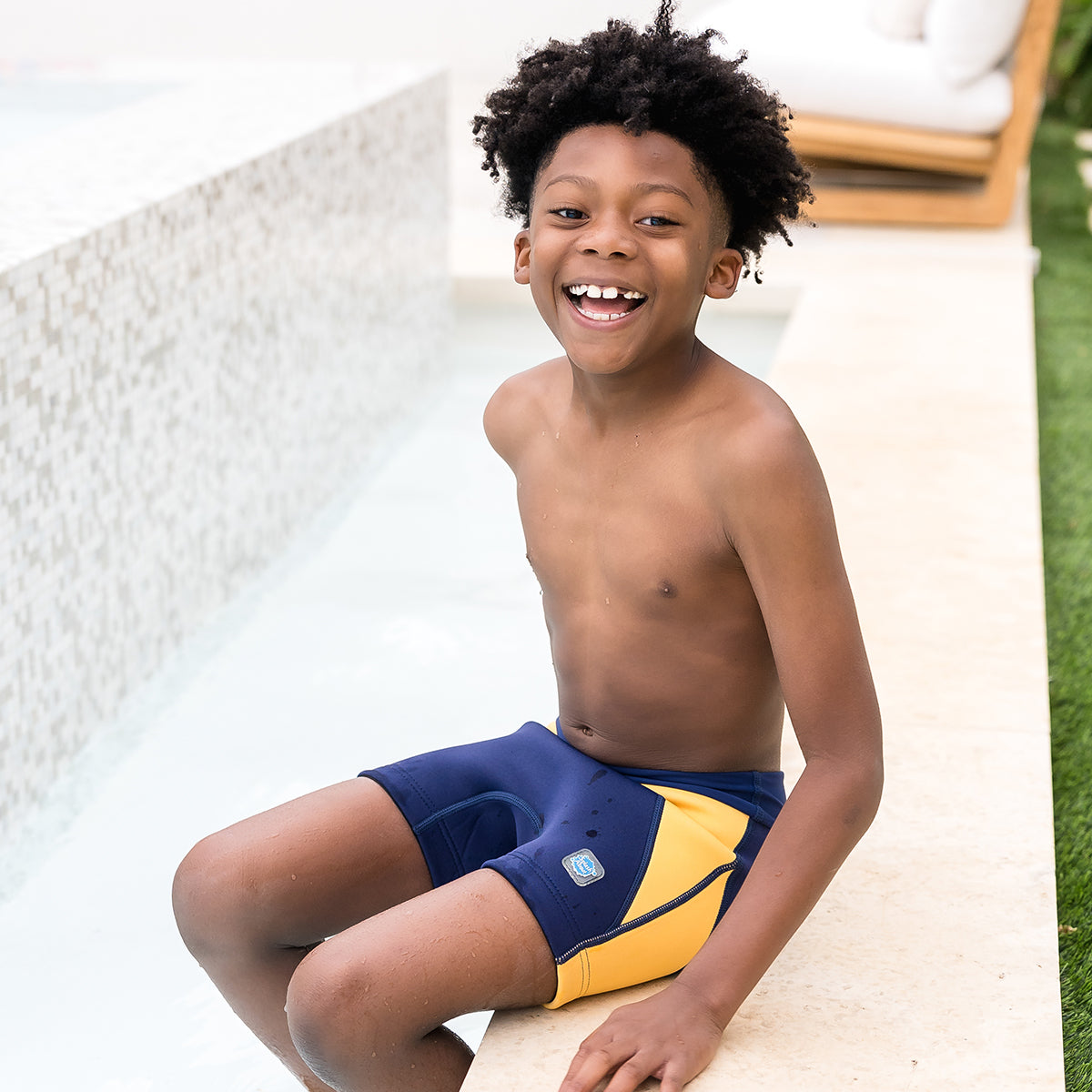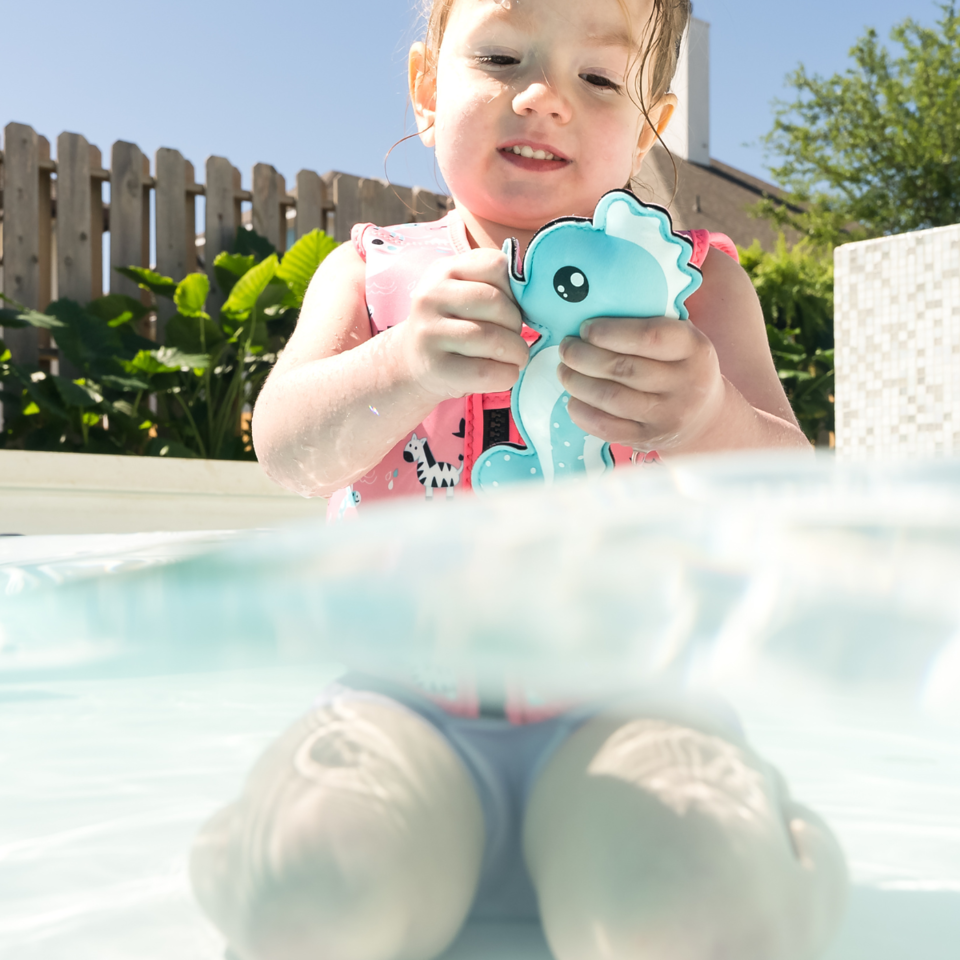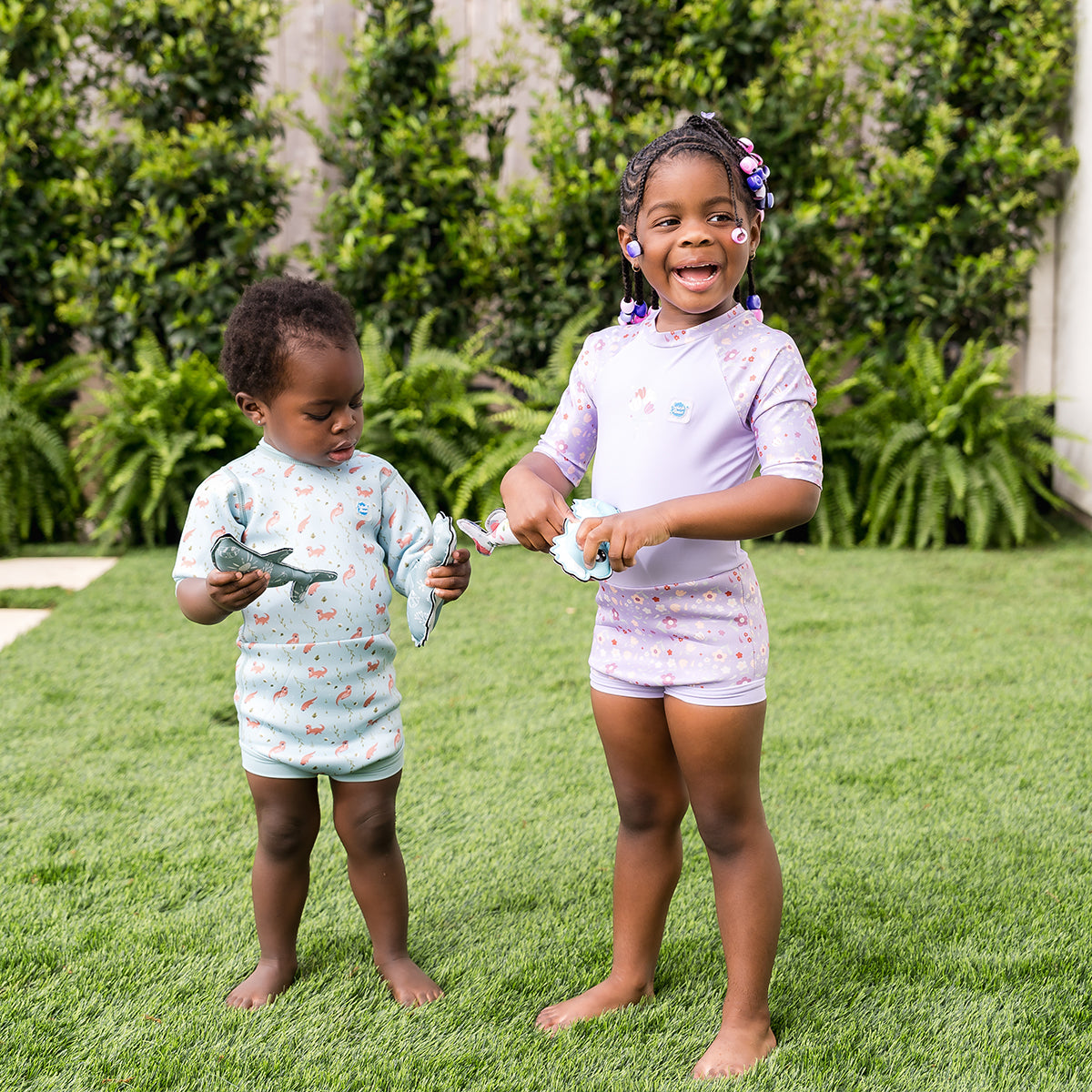Reviewed 18/03/2025
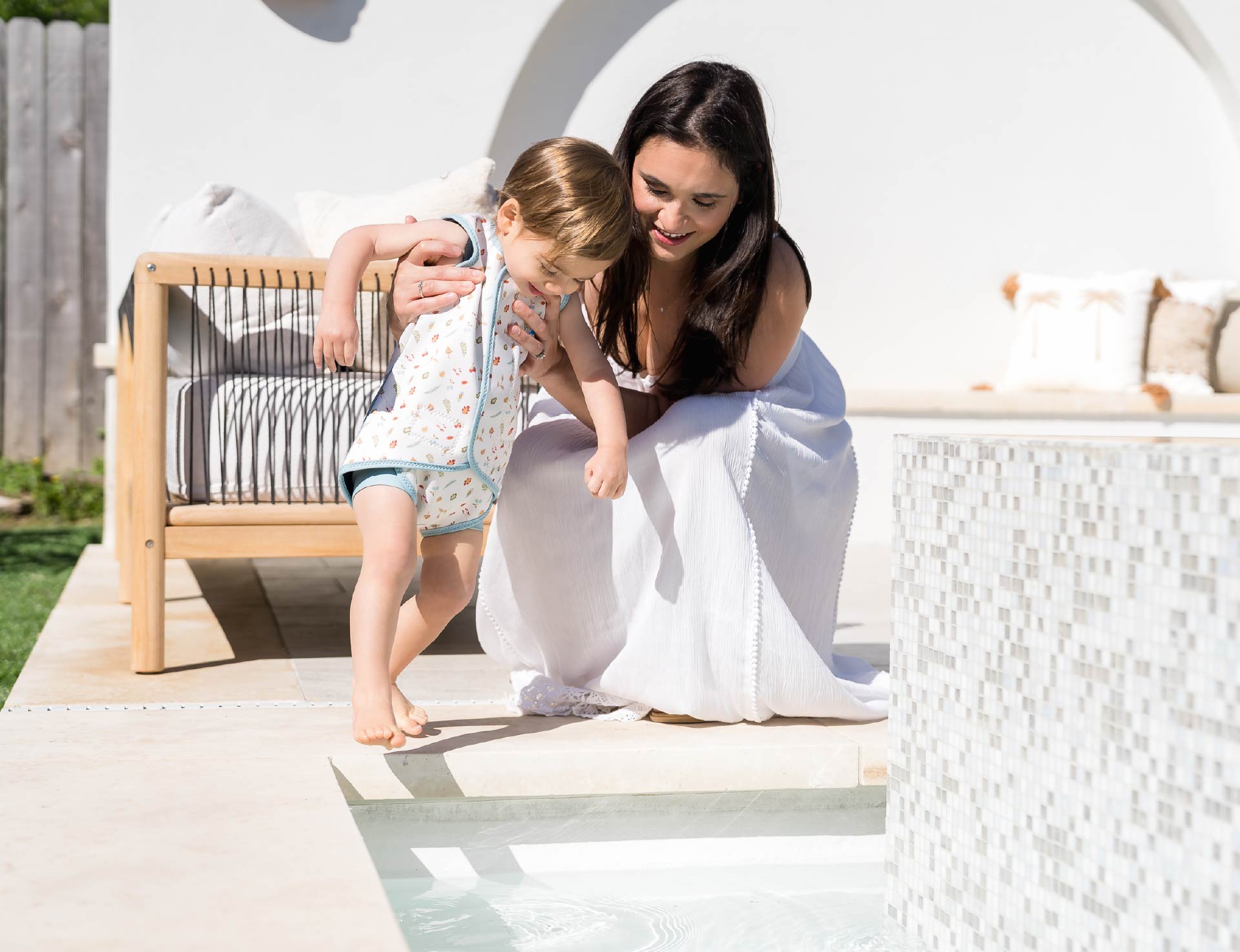
Q1 - From what age can I take my baby swimming?
Babies can enjoy the pool from birth, but according to medical experts, if you've given birth, you should wait seven days after bleeding has ended. This is to reduce the risk of infection. If you've had a cesarean section or a perineal tear, you might need to wait longer. Discuss this with your GP or health visitor during postnatal check-ups.
Of course, dads, grandparents and other caregivers can take baby swimming sooner!
Though, if you're planning to join a class, you'll find some classes set a minimum age of six weeks.
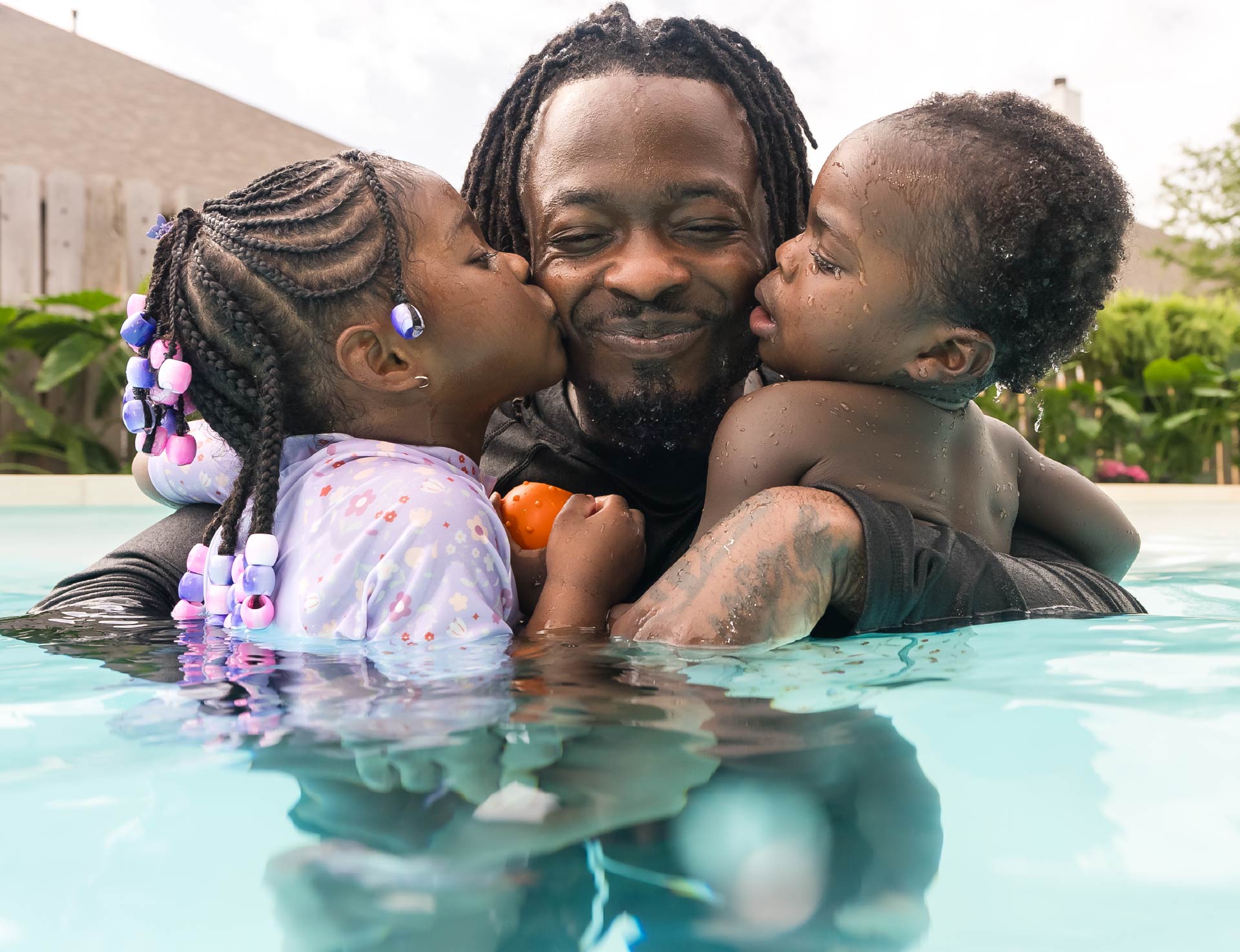
Q2 – Does baby need to be vaccinated before they can go swimming?
According to the NHS, it is safe to take baby swimming from birth - there is no need for them to be vaccinated before they hit the pool.
Q3 - Is the temperature of the pool important? How do I keep my baby warm in the water?
If your baby is under six months old, you should look for a pool that’s heated to around 30-32 degrees. Lots of swimming classes will take place in specially heated pools.
Consider investing in a neoprene wetsuit if you’re planning to visit a pool that is cooler than 30-32 degrees. (Most large, public swimming pools are cooler than 32 degrees. You can always ask an attendant to check the pool’s temperature if you're unsure.)
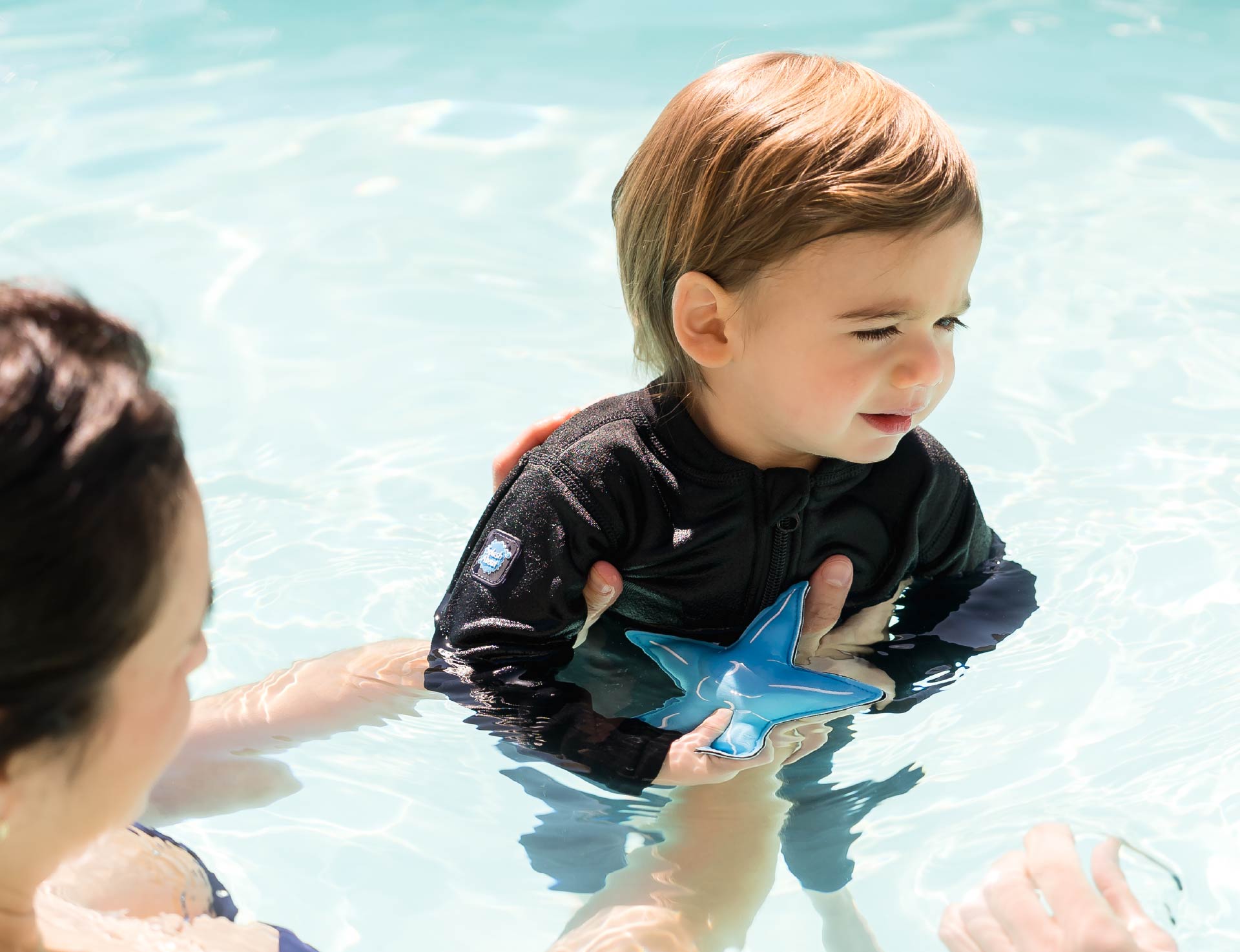
Q4 - What if my baby starts to get cold?
Babies are unable to regulate their body temperatures like adults, so it's important to keep a close eye on them. If they start to look cold or shiver, remove them from the pool and wrap them up. You might find your baby can only manage 10-15 minutes in the water at first, especially if they’re very young.
Q5 - How long should baby be in the water for?
Swimming in a pool will be a new experience for your baby. Besides the water, they'll find the noise, colours and splashing overwhelming too. It's best to start with short
sessions and build up their tolerance.
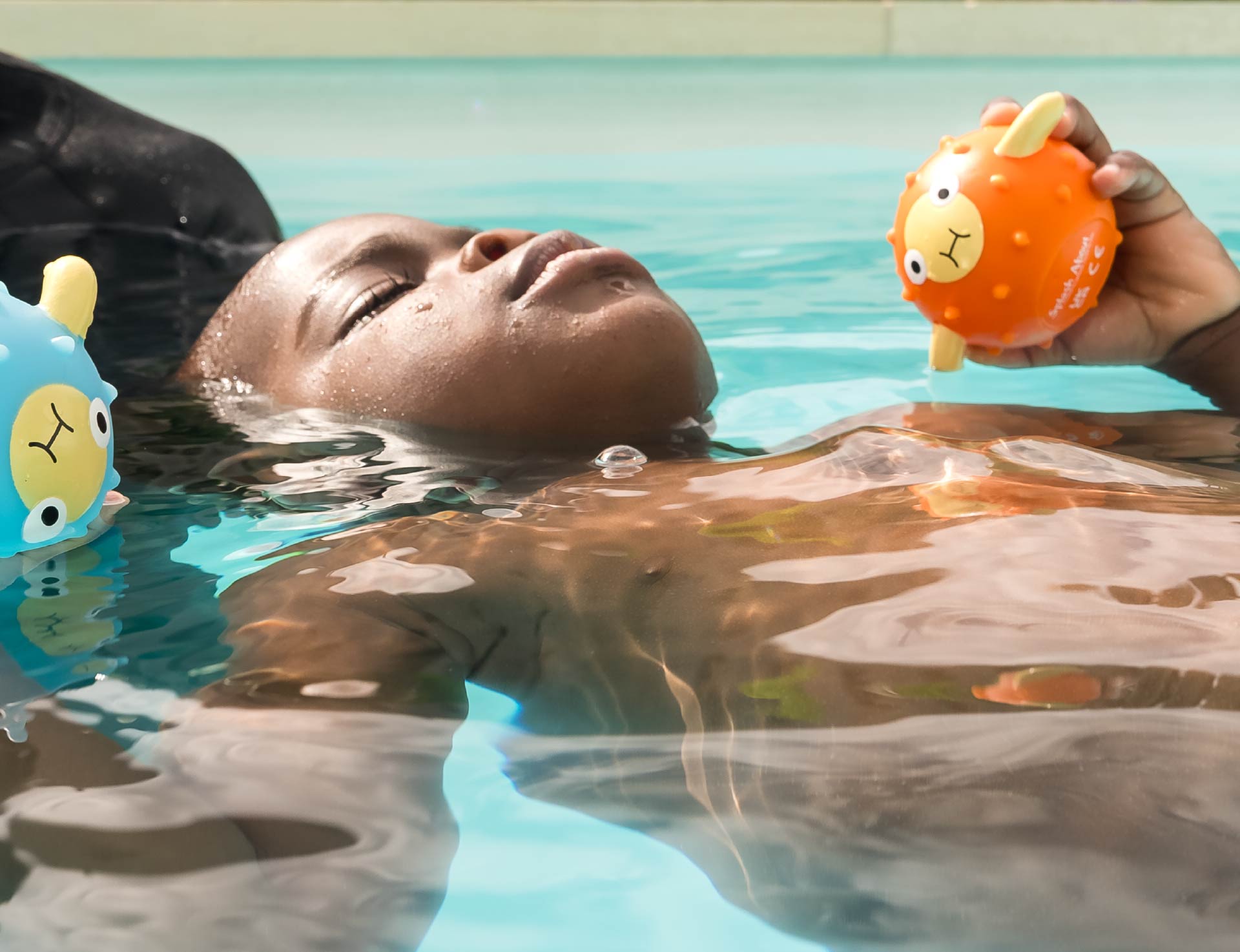
Q6 - How can I get my baby used to the water?
Do familiarise your baby with water at bathtime. Don't submerge them in the tub, but do get them used to the sensation of water trickling down their face. When you visit the swimming pool, slowly lower baby in the water up to their shoulders.
Q7 - What should my baby wear to swimming classes?
Will they need a nappy?
All babies will need to wear a swimming nappy (assuming they’re not potty trained) in the pool. This is usually a requirement of attending classes.
You can get two types of swimming nappies: disposable and reusable. Disposable swim nappies are like regular nappies, they’re thrown away after each use. Reusable swim nappies can be worn multiple times. They’re an eco-friendly option, less likely to leak and can save you money in the long run.
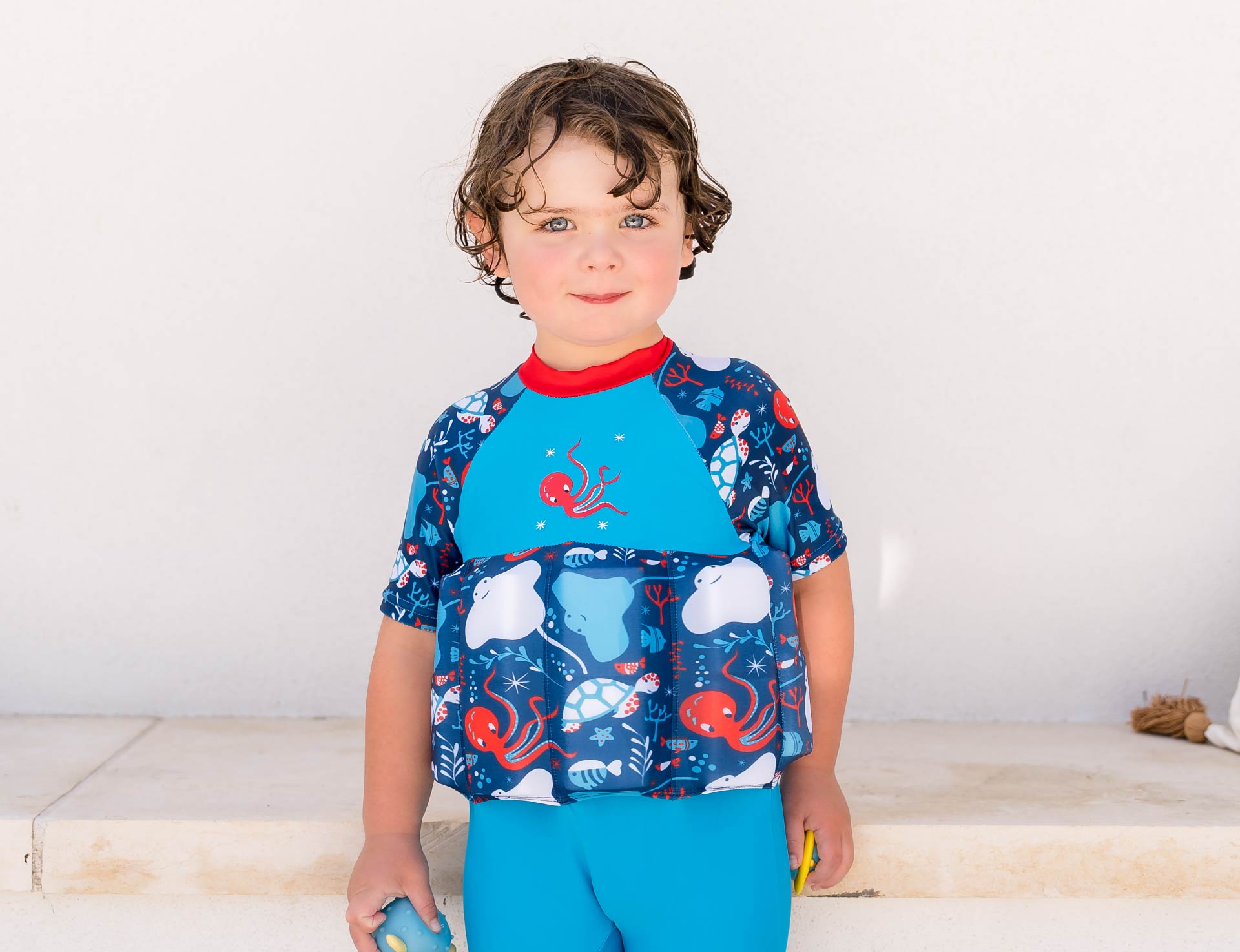
Q8 - Will I need to buy baby swim floats? Or any other inflatables/equipment?
If you're attending a class, the teacher will let you know if any additional equipment is needed.
If you're taking your baby swimming to a leisure centre, you might want to invest in a Float Jacket, or Floatsuit. (available from 1 year)
Our range of Learn to Swim Products include the 16-piece Floatsuits where the floats can be removed in pair as the child gains confidence in the water.
Also including 8-piece Float Jackets which are excellent at positioning children in the correct learn to swim position.
Remember: they’re great for added peace of mind, but you must not rely on them to keep your baby safe. They will NOT protect your baby against drowning. Only use them when your baby is within reach and under constant supervision.

Q9 - What do I need to take with me to a baby swimming session?
As mentioned previously, a reusable swim nappy is essential when taking your baby swimming or attending a swimming lesson.
You will need a Changing Mat which will keep baby away from cold and dirty changing room floors.
Also it may be useful to take some swim toys like our Pufferfish Toys, Swim Mirror or Splash Pals which can be used as the perfect distraction for babies who are nervous in the water.
Always take an extra towel which can be used for you or baby when changing, this will prevent anyone getting cold after swimming.

